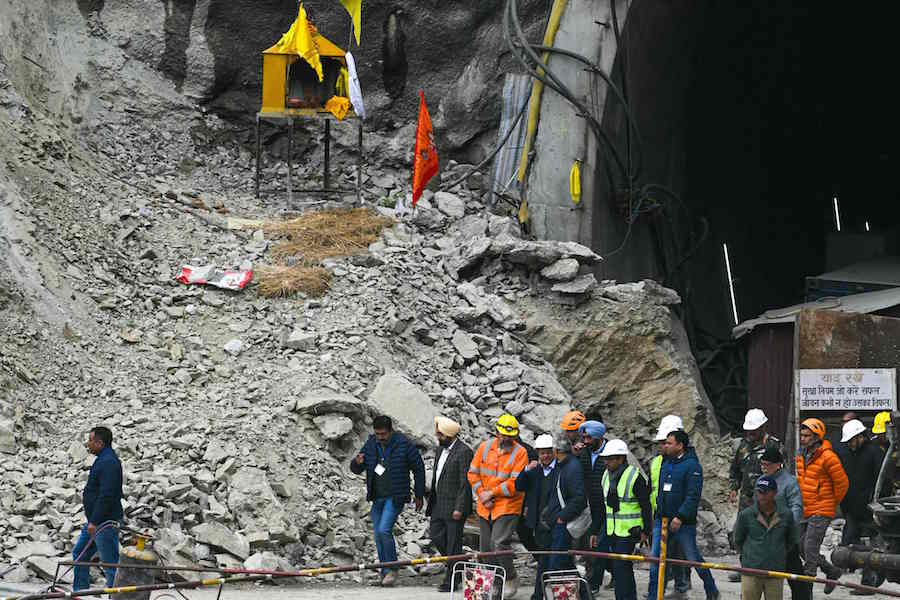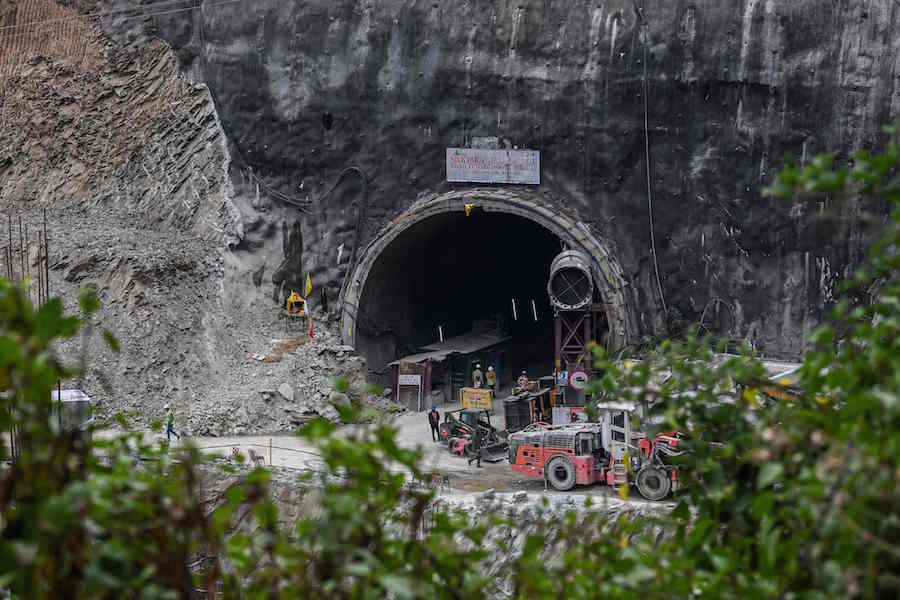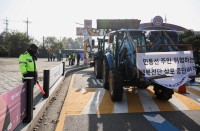
SILKYARA TUNNEL , India, Nov 27, 2023 (AFP) – Indian military engineers were preparing to dig by hand Monday to reach 41 workers trapped in a collapsed road tunnel for 16 days, a rescue operation hit by repeated setbacks.
Soldiers plan to use a so-called “rat-hole mining” technique, digging by hand to clear the rocks and rubble over the remaining nine metres (29 feet), with temperatures plummeting in the remote mountain location in the Himalayan state of Uttarakhand.
Last week, engineers working to drive a metal pipe horizontally through 57 metres (187 feet) of rock and concrete ran into metal girders and construction vehicles buried in the earth, snapping a giant earth-boring auger machine.
“The broken parts of the auger (drilling) machine stuck inside the tunnel have been removed,” senior local civil servant Abhishek Ruhela told AFP on Monday, after a specialised superheated plasma cutter was brought in to clear the metal.
“Preparations are being made to start manual drilling work,” he added. “Indian Army engineering battalion personnel, along with other rescue officers, are preparing to do rat-hole mining”.
Engineers in the bitterly cold conditions will use manual drills to clear the route, a tough task in the narrow pipe, just wide enough for a man to crawl through.
Tunnel expert Chris Cooper, who is advising the rescue teams, said he was optimistic the soldiers will be able to dig through.
“It depends on how the ground behaves,” he told reporters, saying they may yet have to cut through heavy-duty girders that had been meant to hold the collapsed roof up. “We are confident that we can overcome it”.

– ‘Challenging’ –
In a separate effort, vertical drilling has reached more than a quarter of the 89 metres down to the men, a risky route in an area that has already suffered a collapse.
A drilling machine was brought up to the forested hill above the tunnel on a specially-constructed track.
“Vertical drilling is going on at a fast pace,” with teams having reached 19 metres (63 feet) by late Sunday, said Mahmood Ahmed, a top official in the national roads ministry.
Work is ongoing at “full speed but with caution”, he added.
Digging, blasting and drilling have also begun from the far side of the road tunnel, a much longer third route estimated to be around 480 metres.
The 41 construction workers have been trapped in the Silkyara road tunnel since November 12.
Efforts have been painfully slow, complicated by falling debris and repeated breakdowns of drilling machines.
Hopes that the team was on the verge of a breakthrough on Wednesday were dashed, with a government statement warning of the “challenging Himalayan terrain”.
For the distraught relatives of the trapped men, it has been an ordeal without an imminent end in sight.
But Uttarakhand chief minister Pushkar Singh Dhami vowed Monday that all the men would be rescued.
“Do not worry, all the labourers will be taken out safely,” he said on X, formerly Twitter.
The workers were seen alive for the first time on Tuesday, peering into the lens of an endoscopic camera sent by rescuers down a thin pipe through which air, food, water and electricity are being delivered.
Though trapped, they have plenty of space in the tunnel, with the area inside 8.5 metres high and stretching about two kilometres in length.







